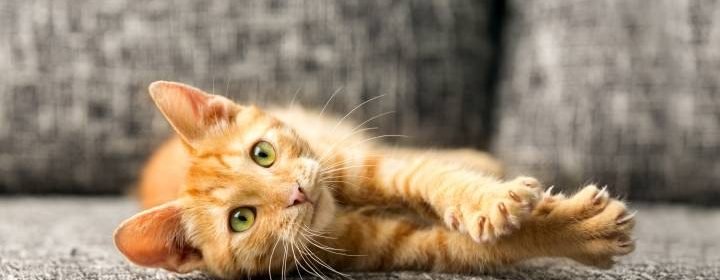Declawing pets is actually ‘amputating a joint’ and should be outlawed: experts

Lawmakers in New York state passed a bill on Tuesday that, if approved by Gov. Andrew Cuomo, will make declawing surgeries for cats illegal unless deemed “medically necessary.”
The bill recommends that declawing procedures for “cosmetic or aesthetic” reasons be punishable by a fine of up to $1,000.
“It’s unnecessary, it’s painful and it causes the cat problems,” said Linda Rosenthal, a Democrat from Manhattan and the bill’s sponsor.
The only exceptions are surgeries for “therapeutic purpose(s),” such as for treatment of an illness or disease.
In an interview with the The New York Times, Rosenthal called the bill a way to protect cats from pet owners who “think their furniture is more important than their cat.”
If the bill is signed into law, New York state will be the first in the United States to officially ban declawing.
The state will join several U.S. cities — such as Denver, San Francisco and Los Angeles — as well as many other countries, including Australia, New Zealand and most of Europe.
In Canada, declawing is only illegal in two provinces: Newfoundland and Nova Scotia.
However, it has been banned by several provincial veterinarian associations across the country, including groups in Manitoba, New Brunswick, British Columbia and Alberta.
In recent months, there’s been more pressure placed on veterinarian associations in remaining provinces, such as Ontario and Quebec, to follow suit and ban declawing.
However, according to Jan Robinson, registrar and CEO of the College of Veterinarians of Ontario, banning the procedure as a veterinarian association is not the same as making it illegal. Sometimes, the former can do more harm than good.
“What we’re seeing in Nova Scotia, Newfoundland… and out of New York state are societal decisions,” said Robinson.
“When you have the law coming… then what you’ve got is nobody can do the procedure.”
In contrast, when a veterinarian association bans the procedure, it only becomes prohibited for licensed veterinarians to perform the surgery.
This means other, potentially less qualified people are still free to offer declawing procedures, which worries Robinson.
“If you make it professional misconduct for a veterinarian to do it, then [the client] can have it done by whomever,” she said.
“If these procedures are going to go on from time to time, then what we want is the most skilled individuals to be able to do that.”
Although the group has not banned the procedure, the College of Veterinarians of Ontario does not support declawing.
“We don’t support surgeries for cosmetic purposes that are medically unnecessary. We encourage veterinarians not to perform them unless they are medically necessary or beneficial to the animal, and that becomes very context specific,” said Robinson.
“Our belief is that that should be the judgment of the veterinarian — the medical professional — who is there with that client, with that animal, with that circumstance and [who is] making a judgment around that.”
This is aligned with the position of the Canadian Veterinary Medical Association (CVMA), which also vehemently opposes the practice.
According to veterinarian Dr. Jim Berry, a past president of the CVMA and current chair of the CVMA professional development committee, declawing is actually “amputating to a joint.”
“The common term is ‘declawing,’ which makes it sound like we’re just removing the nail,” said Berry, who is also co-owner of Douglas Animal Hospital in Fredericton, N.B.
“The actual name is partial digital amputation, and… that’s because what we’re actually doing is removing the last bone on the finger of each paw.”
The procedure is extremely painful, especially during recovery.
“If you hold your finger up, it’s not just taking off the nail — it would be like amputating to that last joint. Instead of having three bones in the end of each finger, you’d only have two,” he said.
After being declawed, cats have to change the way they walk and do other basic tasks because of the loss of bone.
“Scratching is a normal behaviour for a cat… they’re scratching for marking and scratching for care of their claws,” said Berry.
“What you’re doing is… taking away a normal behaviour [and] creating a situation where we have surgical pain.”
Berry says declawing can also cause chronic pain.
“It comes down to why we’re doing this. There’s no benefit to the cat,” Berry said.
When declawing is deemed “medically necessary” will vary from province to province. However, it’s usually only in severe situations, such as a tumour in the nail or when nails are severely infected.
“We are supposed to be advocating for the health and well-being of our patients,” said Berry.
“It’s very hard to rationalize that one.”
Sign up for our Health IQ newsletter
© 2019 Global News, a division of Corus Entertainment Inc.
Source: Read Full Article

